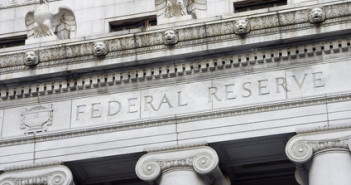After the launch of QE3, the Fed is likely to leave policy unchanged. In addition, also the forecasts aren’t expected to budge at this time, says John Kicklighter of DailyFX.
In the interview below, Kicklighter also discusses the impact of the upcoming US elections on volatility, the islands dispute on the Chinese and Japanese economies (we haven’t seen it all) and other topics that move markets.
John Kicklighter is a currency strategist for FXCM in New York where he specializes in combining fundamental and technical analysis with money management. John authors a number of regular articles for DailyFX.com, ranging in topics from basic fundamental forecasts for the G10 economies and commodities to more complex subjects like the level of risk sentiment across the financial markets and the carry trade specifically. John has actively traded since he was a teenager. His experience ranges from spot currency, financial futures, commodities, stocks, and options on all of these instruments for his personal accounts. John graduated from the Zicklin School of Business at Baruch College in New York with a Bachelors degree in Finance and Investment.
- Do you think that the Fed will acknowledge some positive signs in the US economy in its upcoming meeting? Or rather remain cautious and not budge before the elections?
The Federal Reserve increased its stimulus effort at its September policy gathering and offered up its quarterly projects for growth, inflation and rates. The outlook was certainly weaker than what was seen before, but in some respects it still retained an optimistic tone. Since the introduction of QE3, the data has offered a mixed view (consumer confidence and housing have improved but manufacturing has wavered). Given the central bank’s medium-term outlook, this short run of data won’t likely sway them one way or another regardless. Given the recent change to policy and the time it takes to see the program to take effect (even with the expiration of the Operation Twist effort at the end of the year), it is unlikely that the Fed will significantly change their bearing through policy or forecast.
- Volatility in currencies remains quite low. Could this be partially attributed to the upcoming US elections? Can we expect higher volatility from November 6th onwards?
Low volume (the FX VIX is just off 5-year lows) is not a situation unique to the currency market. Volatility is low across the board. If we think about what these indexes are derived from implied volatility from options, they are a reflection of the cost for insuring underlying positions from suffering losses (for the most part). Given the severely low level of yield / carry that is offered in these markets and the prevalence of stimulus, the cost of insurance – even at extraordinary lows – can be too expensive. Of course, all it takes is a significant correction in capital markets and carry exposure to prove that the cost of not protection positions was much higher. The US election likely has little to do with this – the uncertainty of the event would actually encourage an increase in options interest and likely boost volatility measures. Expectations that this event will be particularly market moving are pretty low, but the Fiscal Cliff – that is a different story.
- With the banking union idea fading away, do you think that Spain will find itself without choices and asking for a bailout? Or will it continue taking its time?
The Banking Union hasn’t disappeared, it – just like so many other things in the Euro Zone – has been pushed back. Having that agreement in place is important for putting doling out necessary funds to struggling financial institutes going forward, but Spain has some breathing room given its unique bank-sector help. Prime Minister Rajoy doesn’t need to push for a rescue if the market isn’t locking him out of the market with painfully high benchmark rates. That said, as general investor sentiment retreats, Spain’s benchmark yields will rise and the country will likely be pushed to seek a full rescue – of course, at that point they will be requesting it under duress.
- Fresh data shows that Japan’s deficit is wider, including a significant drop in exports to China. Can the islands dispute further weigh on the yen, or will the safe haven status stabilize the Japanese currency?
The Islands dispute between Japan and China has certainly impacted trade and we haven’t likely seen the bulk of the impact. There is considerable economic value to the this small plot of land and the waters that surround it, so it won’t be easily resolved. On the other hand, both sides have considerable interest in resolving the situation quickly as they are represent a significant source of trade to each other – something that is a critical necessity for both at present. Yet, looking at the deficit figures, my concern extends a little further than the exports to China. Shipments to the EU dropped over 20 percent year-over-year through September. There is a more permanent problem here.
- Interest rates are near zero in some major countries and are set to fall in others, such as Australia. Are there any hawkish central banks left? What could trigger central banks to change course?
The only central bank that is still maintaining even a modest hawkish bias is the Bank of Canada. Governor Carney maintained this bias – surprisingly enough – after weakened inflation figures and growing questions about the future health of the global economy. There is a reason it is unusual to see one central bank diverge in its views from the consensus because they are all interconnected through globalization. Canada will increasingly struggle to hold this bias going forward if the global economy slows further. For the doves to change course, they would either need to see a balance of growth and building inflation or a situation where prices were growing at an extreme rate (which would lead to quite the controversial decision on what to do with rates).
